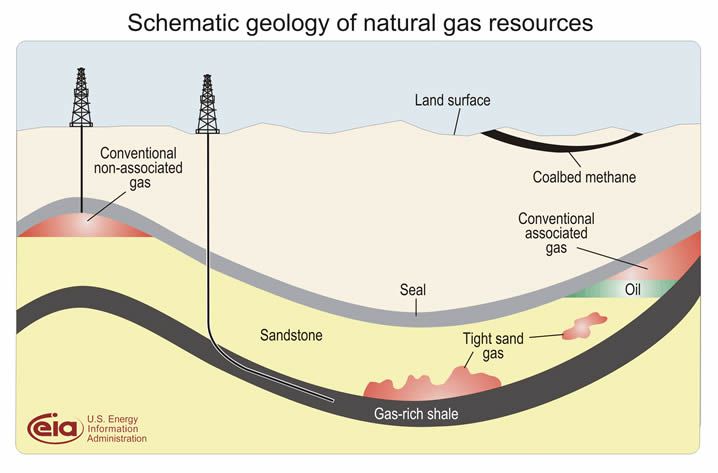-
 Compact fluorescent lamp
Compact fluorescent lamp
-
 Solstice
Solstice
-
 Tetragonal system
Tetragonal system
-
 HDCP
HDCP
-
 USB
USB
-
 Falcon 1
Falcon 1
-
 Chalcogenide
Chalcogenide
-
 FDMA
FDMA
-
 Gibberellins
Gibberellins
-
 Chipset
Chipset
-
 Lesser celandine
Lesser celandine
-
 Acidic rock
Acidic rock
-
 Emergence
Emergence
-
 Motility
Motility
-
 Oolitic
Oolitic
-
 DLP
DLP
-
 Anisotropic
Anisotropic
-
 New Worlds Observer
New Worlds Observer
-
 Pregnancy
Pregnancy
-
 Bufotenine
Bufotenine
-
 Pigmentation
Pigmentation
-
 Earth electrode
Earth electrode
-
 Myelin
Myelin
-
 Chlorosity
Chlorosity
-
 Augmented reality
Augmented reality
-
 Acusia
Acusia
-
 Calcium carbonate
Calcium carbonate
-
 Hapten
Hapten
-
 Scanner
Scanner
-
 Wolf, Max
Wolf, Max
Shale gas
Shale gas is a natural gas trapped at great depths in certain shales and sedimentary basins. Therefore it is not held under an impermeable layer like "conventional" gas and oil deposits, but imprisoned in the rock itself. To extract it the rock has to be fractured by injecting water under pressure mixed with some additives. This is called hydraulic fracture or fracking).
Exploiting these deposits is costly and involves environmental risks to the sub-soil, the water table and on the surface. The gas concentration is lower than in conventional deposits but the zones concerned are larger. These deposits, which have been exploited for several years, especially in the United States, have enormous potential.
 A diagram showing hydrocarbon deposits. The Gas-rich shale is deep down. The Conventional gas deposits, which may or may not be combined with oil, migrated to the surface a long time ago and are trapped by an impermeable layer or seal. Between the two there may be local concentrations in dense sand (tight sand gas). The diagram also shows coalbed methane. © US Energy Information Administration
A diagram showing hydrocarbon deposits. The Gas-rich shale is deep down. The Conventional gas deposits, which may or may not be combined with oil, migrated to the surface a long time ago and are trapped by an impermeable layer or seal. Between the two there may be local concentrations in dense sand (tight sand gas). The diagram also shows coalbed methane. © US Energy Information Administration
Latest
Fill out my online form.



